Heim >Backend-Entwicklung >PHP-Problem >Wie man PHP in Sublime erstellt
Wie man PHP in Sublime erstellt
- 藏色散人Original
- 2022-10-26 09:31:092673Durchsuche
sublime搭建php的方法:1、打开sublime,点击“Ctrl+Shift+P”,再输入install;2、配置SublimeLinter;3、修改路径;4、配置php编译系统;5、添加“{ "cmd":["php","$file"],"file_regex": "php$","selector":"source.php"}”即可。

本教程操作环境:windows7系统、PHP8.1版、Dell G3电脑。
sublime 怎么搭建php?
sublime3配置php环境
最后的演示效果:
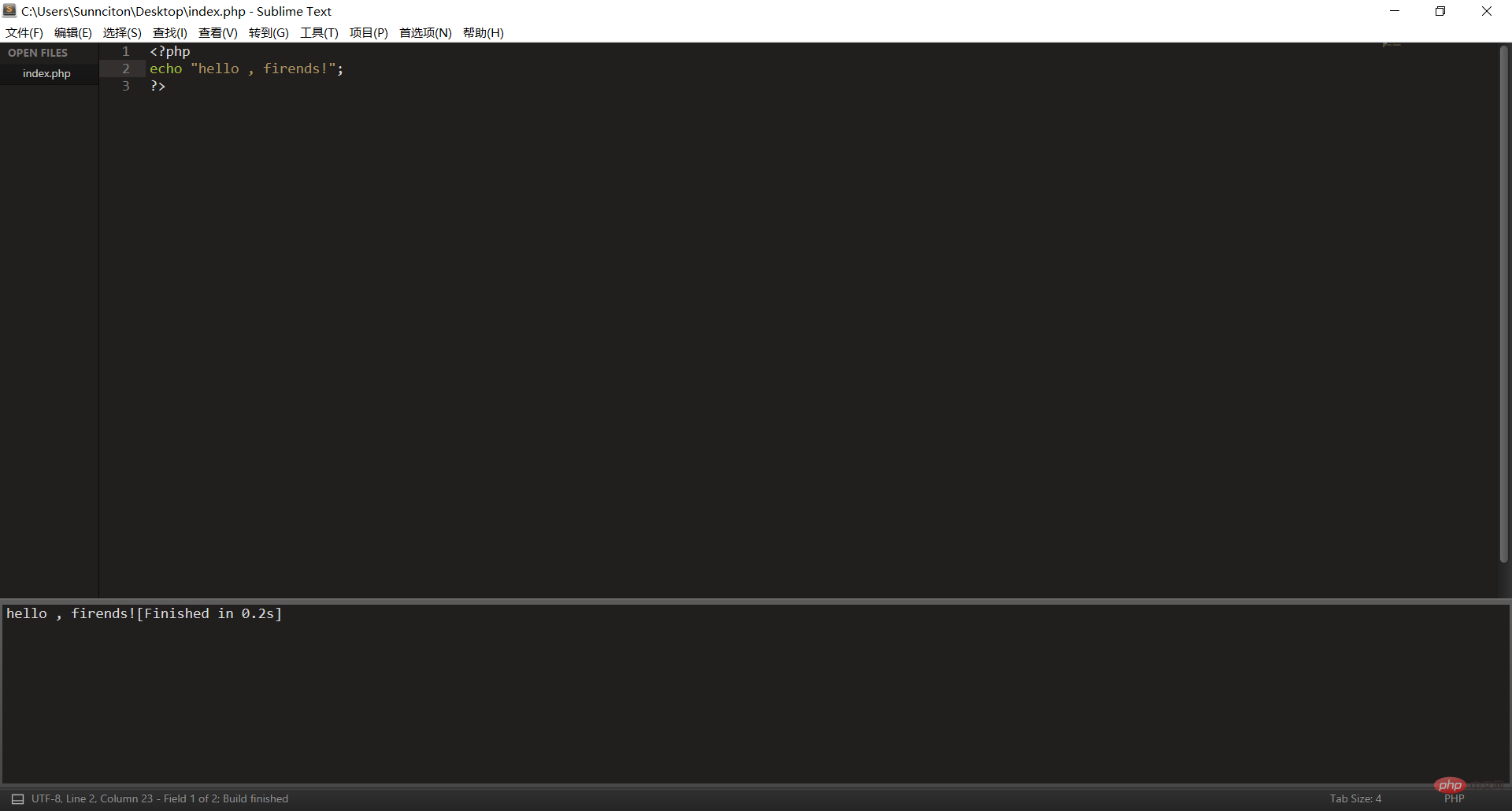
1. 按照sublime3开始前的准备工作
Ctrl+Shift+P,再输入install ,最后再输入想要安装的软件 (输入install会有几十秒的延迟,请不要重复操作)
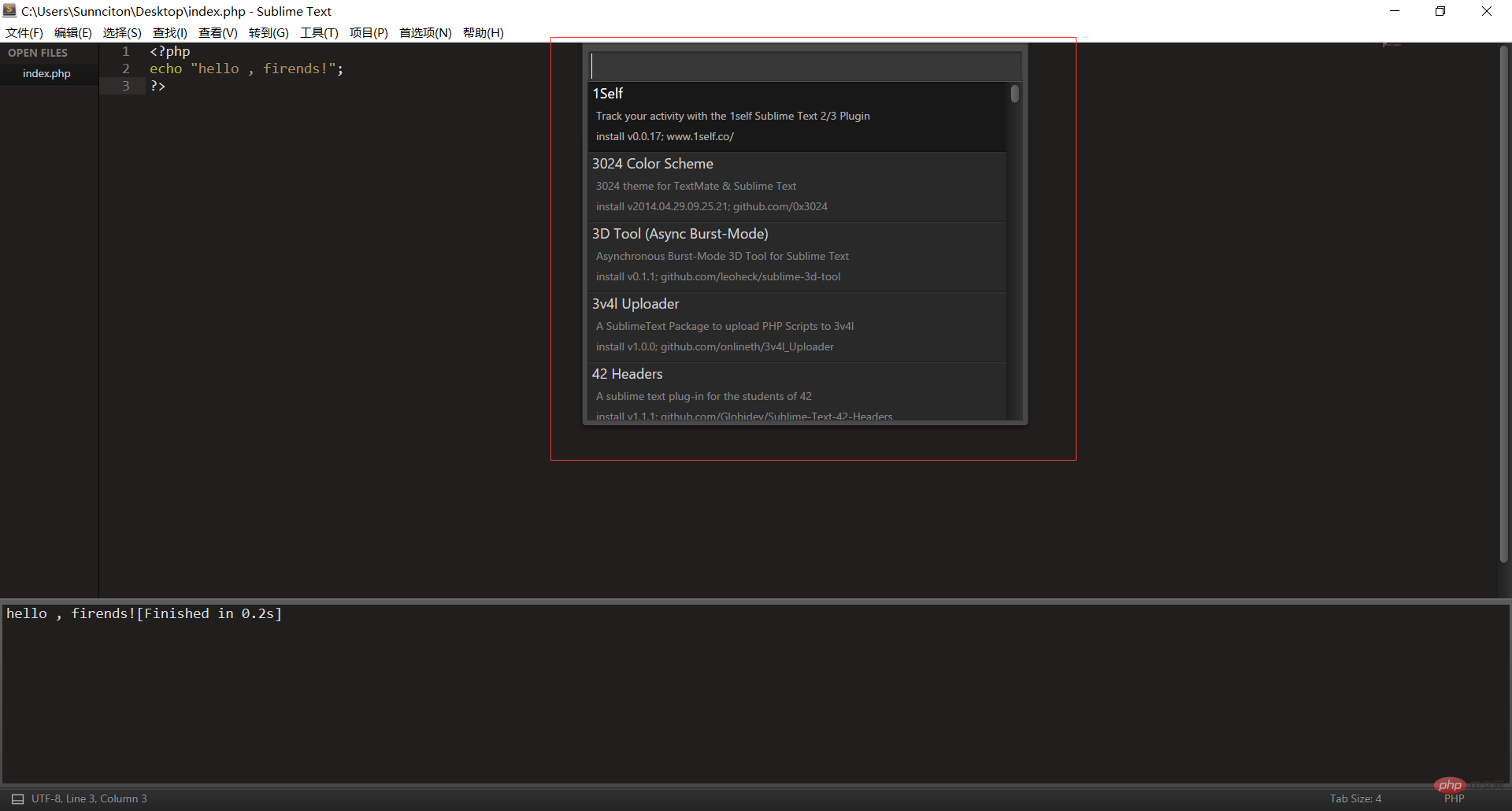
配置php环境,目前只需要配置两个,首先配置SublimeLinter
先安装好SublimeLinter ,再进入下面的步骤(如果不懂英语翻译中文那么就去翻译)
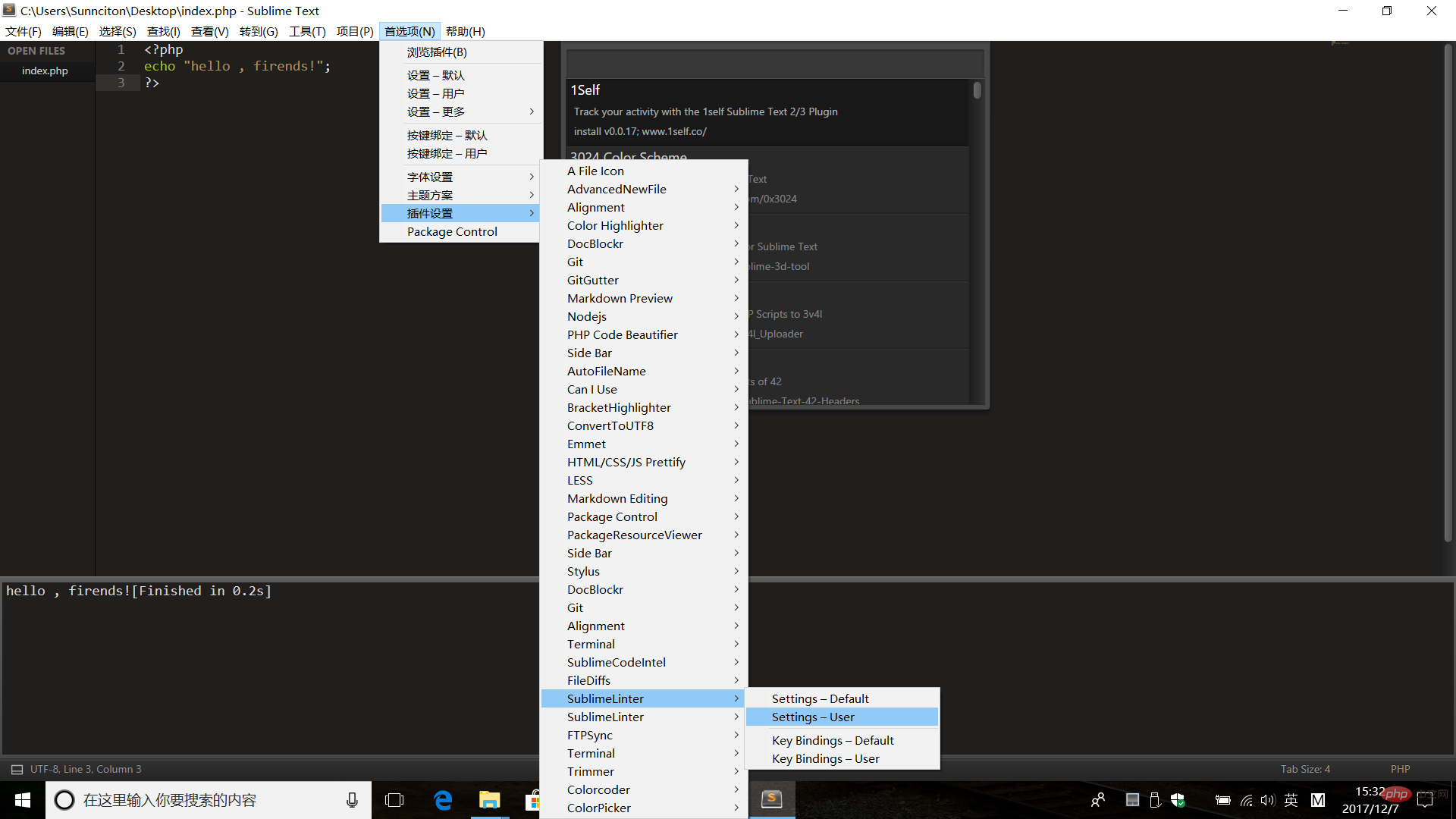
Settings-User
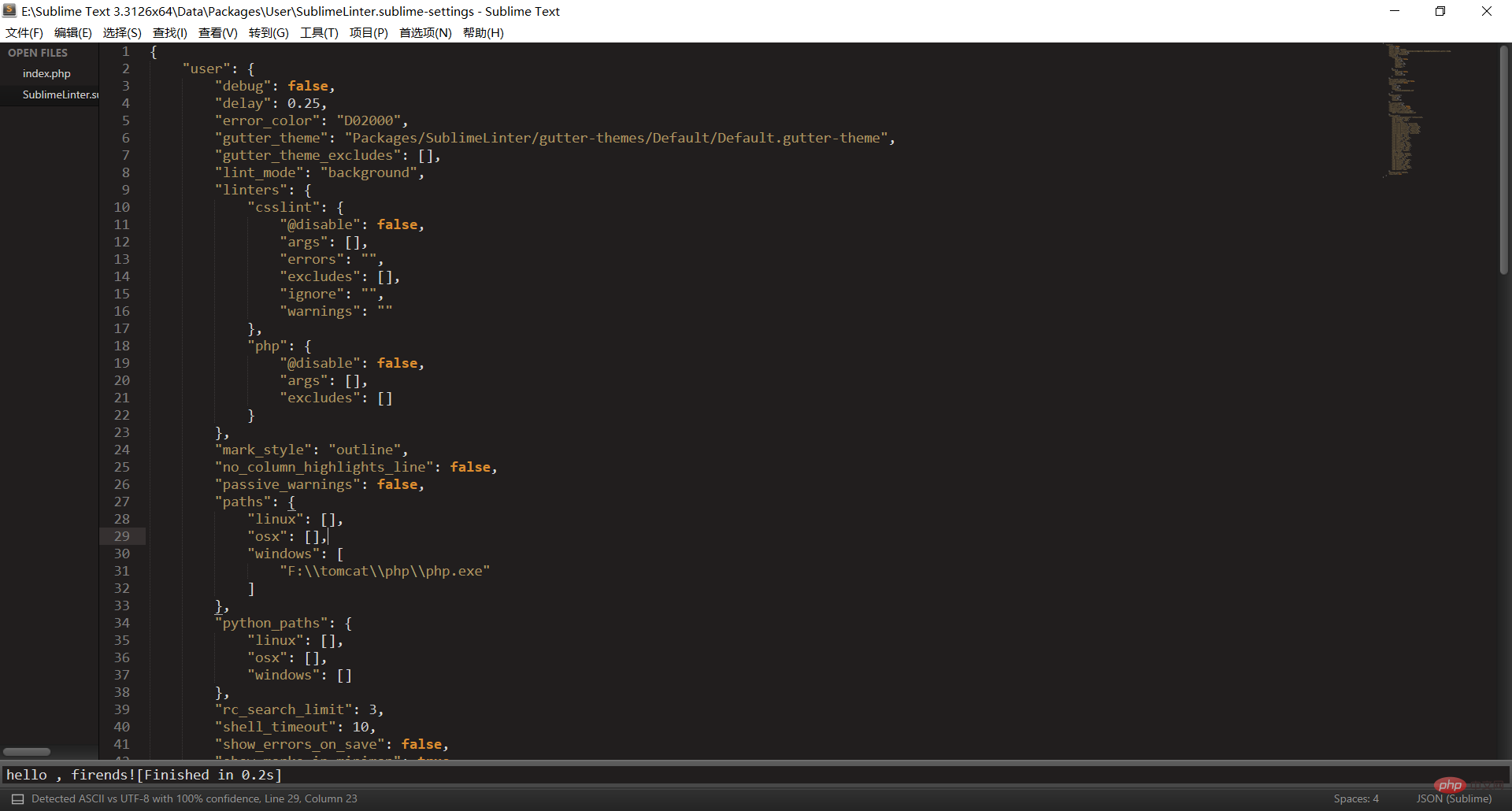
直接拷贝下面的代码上去即可,修改一下31和45行的路径即可(记得全部拷贝!)
{
"user": {
"debug": false,
"delay": 0.25,
"error_color": "D02000",
"gutter_theme": "Packages/SublimeLinter/gutter-themes/Default/Default.gutter-theme",
"gutter_theme_excludes": [],
"lint_mode": "background",
"linters": {
"csslint": {
"@disable": false,
"args": [],
"errors": "",
"excludes": [],
"ignore": "",
"warnings": ""
},
"php": {
"@disable": false,
"args": [],
"excludes": []
}
},
"mark_style": "outline",
"no_column_highlights_line": false,
"passive_warnings": false,
"paths": {
"linux": [],
"osx": [],
"windows": [
"F:\\tomcat\\php\\php.exe"
]
},
"python_paths": {
"linux": [],
"osx": [],
"windows": []
},
"rc_search_limit": 3,
"shell_timeout": 10,
"show_errors_on_save": false,
"show_marks_in_minimap": true,
"sublimelinter": "save-only",
"sublimelinter_executable_map": {
"php": "F:\\tomcat\\php\\php.exe"
},
"syntax_map": {
"coffeescript (gulpfile)": "coffeescript",
"html (django)": "html",
"html (rails)": "html",
"html 5": "html",
"javascript (babel)": "javascript",
"javascript (eslint)": "javascript",
"javascript (gruntfile)": "javascript",
"javascript (gulpfile)": "javascript",
"javascript (postcss)": "javascript",
"javascript (stylelint)": "javascript",
"javascript (webpack)": "javascript",
"json (babel)": "json",
"json (bower)": "json",
"json (composer)": "json",
"json (eslint)": "json",
"json (npm)": "json",
"json (postcss)": "json",
"json (settings)": "json",
"json (stylelint)": "json",
"json (sublime)": "json",
"json (tern js)": "json",
"magicpython": "python",
"php": "html",
"python django": "python",
"pythonimproved": "python",
"xml (config)": "xml",
"xml (svg)": "xml",
"yaml (circleci)": "yaml",
"yaml (docker)": "yaml",
"yaml (eslint)": "yaml",
"yaml (lock)": "yaml",
"yaml (procfile)": "yaml",
"yaml (stylelint)": "yaml",
"yaml (yarn)": "yaml"
},
"warning_color": "DDB700",
"wrap_find": true
}
}
好了,再说配置php 编译系统的事情
一张图阐释配置系统环境
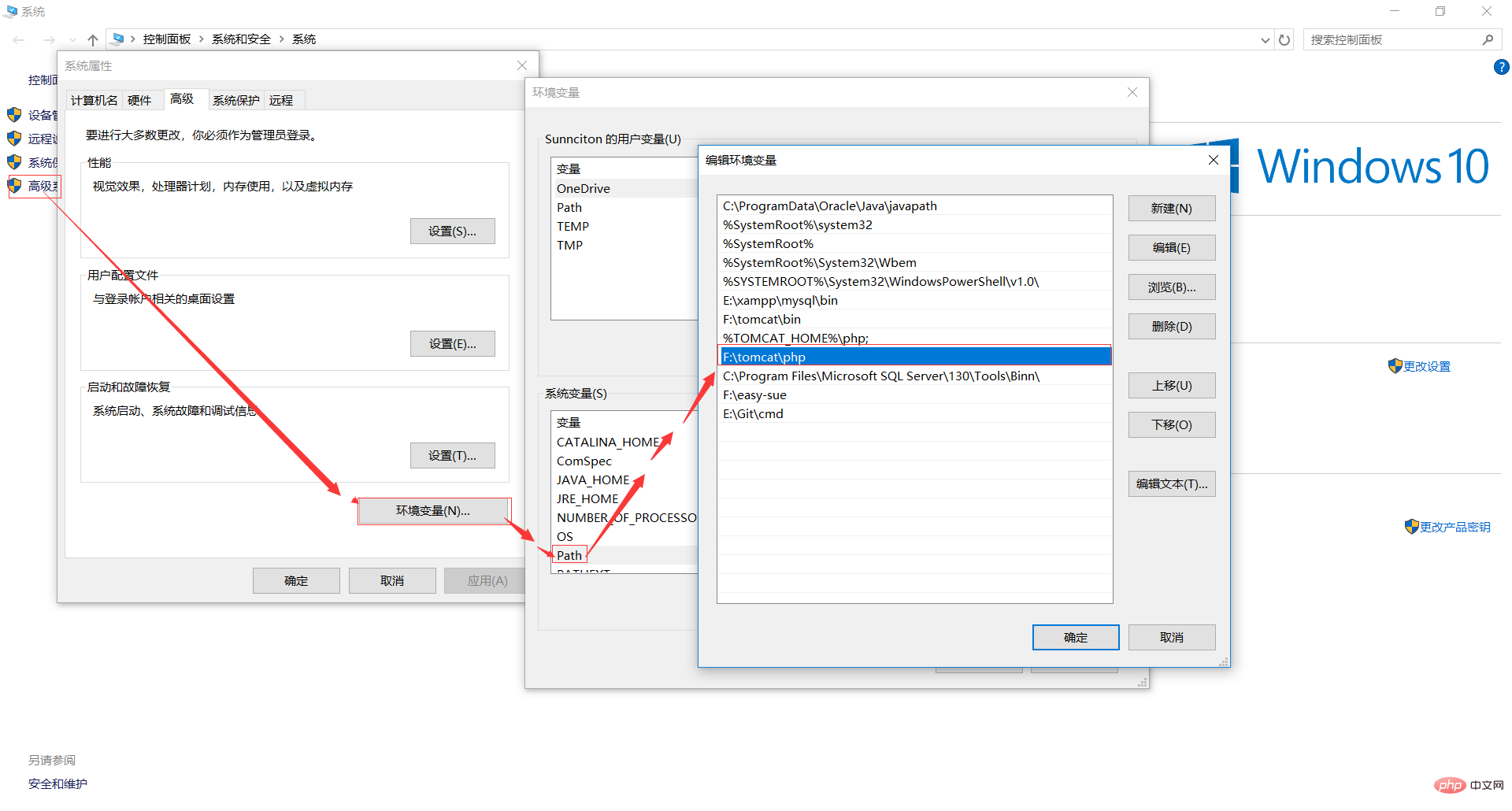
默认是有php的,不管你信不信,反正我是信了,来,说说配置php的编译系统吧!!!
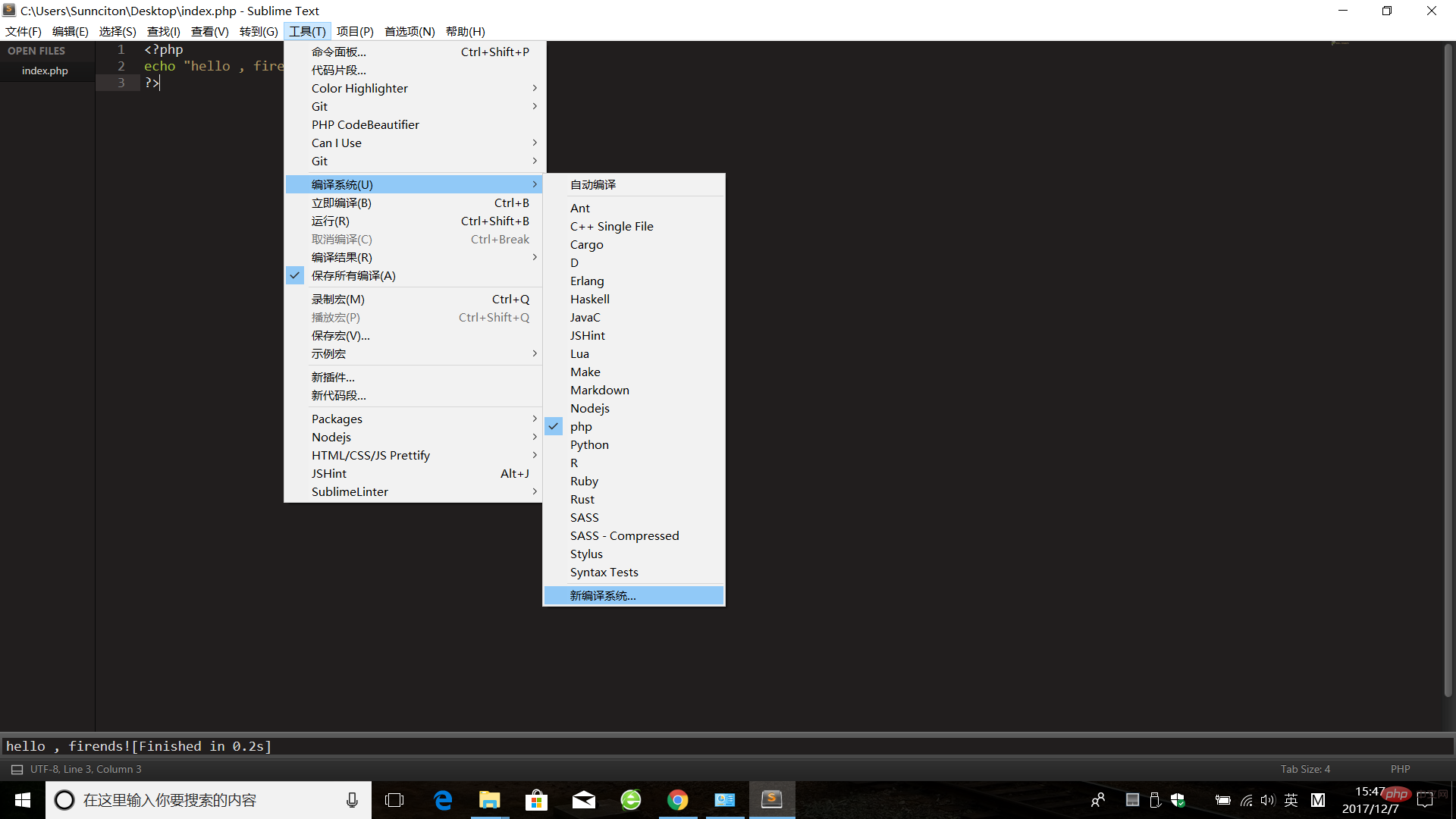
先把里面的内容删除!

再加入以下代码:
{
"cmd":["php","$file"],"file_regex":
"php$","selector":"source.php"
}
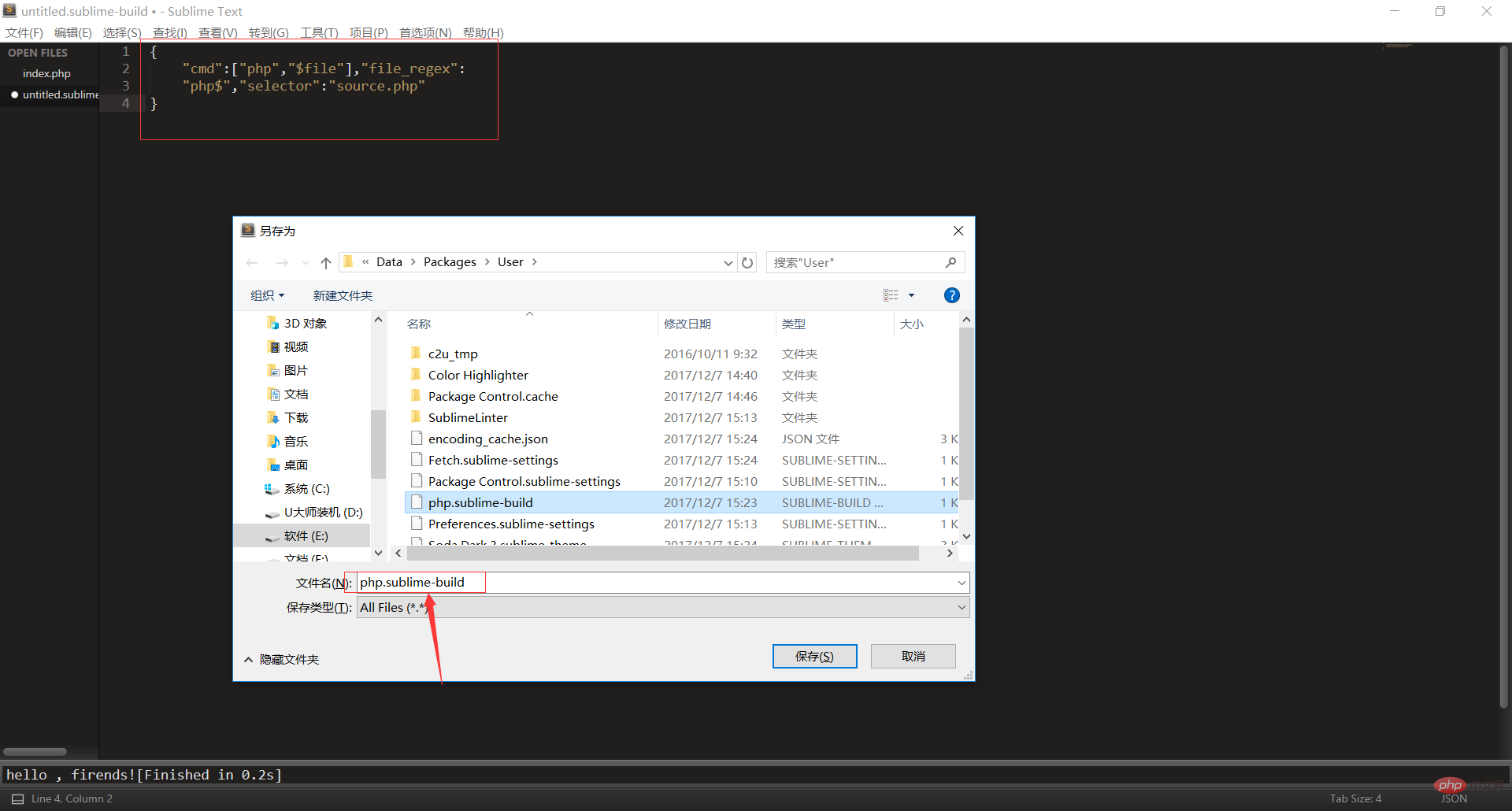
重命名为:php.sublime-build,最后保存即可,这是我们就可以在编译系统看见php了,这时我们再勾选上即可。
推荐学习:《PHP视频教程》
Das obige ist der detaillierte Inhalt vonWie man PHP in Sublime erstellt. Für weitere Informationen folgen Sie bitte anderen verwandten Artikeln auf der PHP chinesischen Website!
In Verbindung stehende Artikel
Mehr sehen- So überprüfen Sie, ob die PHP-Umgebung erfolgreich eingerichtet wurde
- Dateiverschlüsselungsprozesse in drei PHP-Umgebungen
- Lassen Sie uns darüber sprechen, wie Sie automatische Updates in Sublime deaktivieren (Bild- und Texteinführung).
- Ein Artikel zum einfachen Konfigurieren der Lua-Entwicklungsumgebung von Sublime

